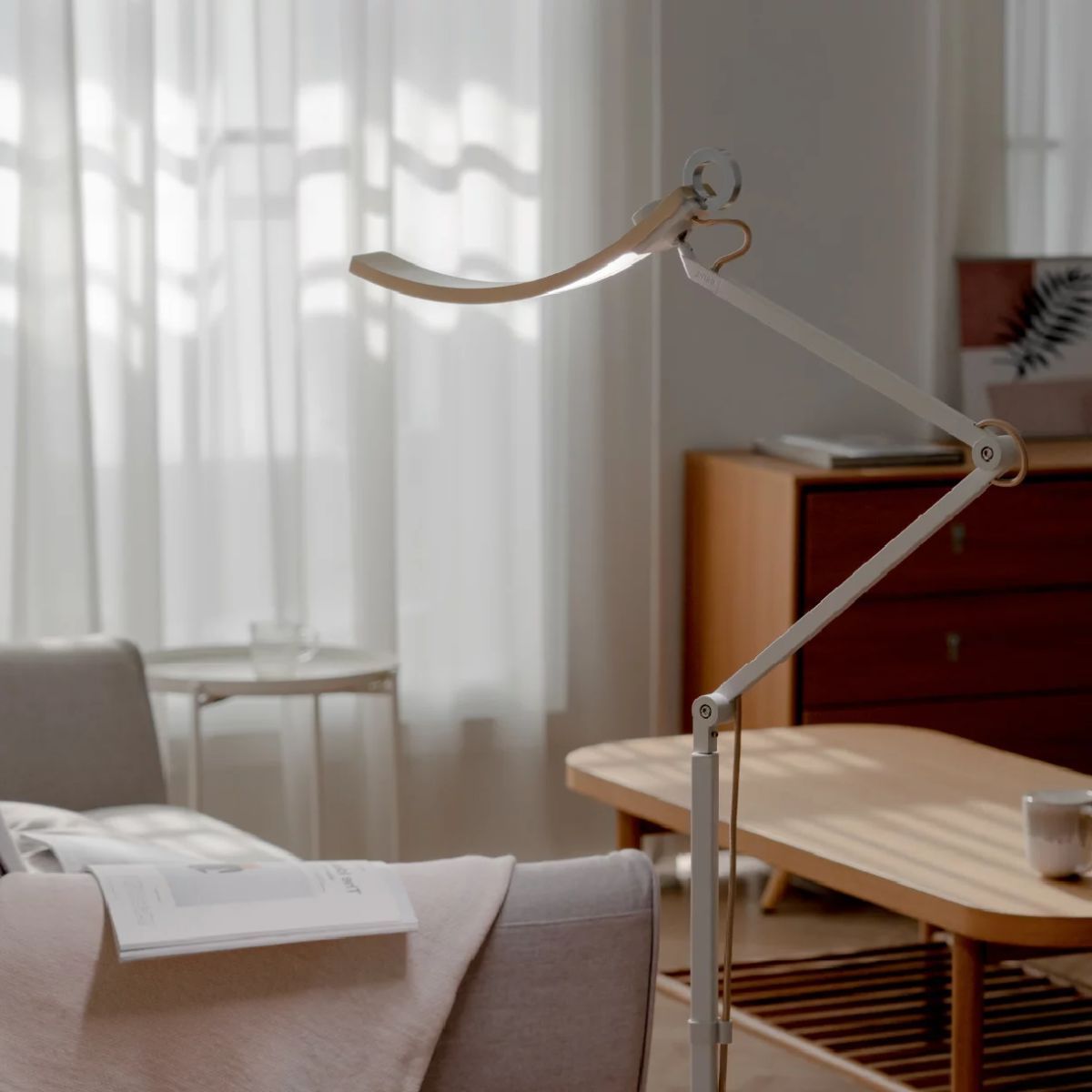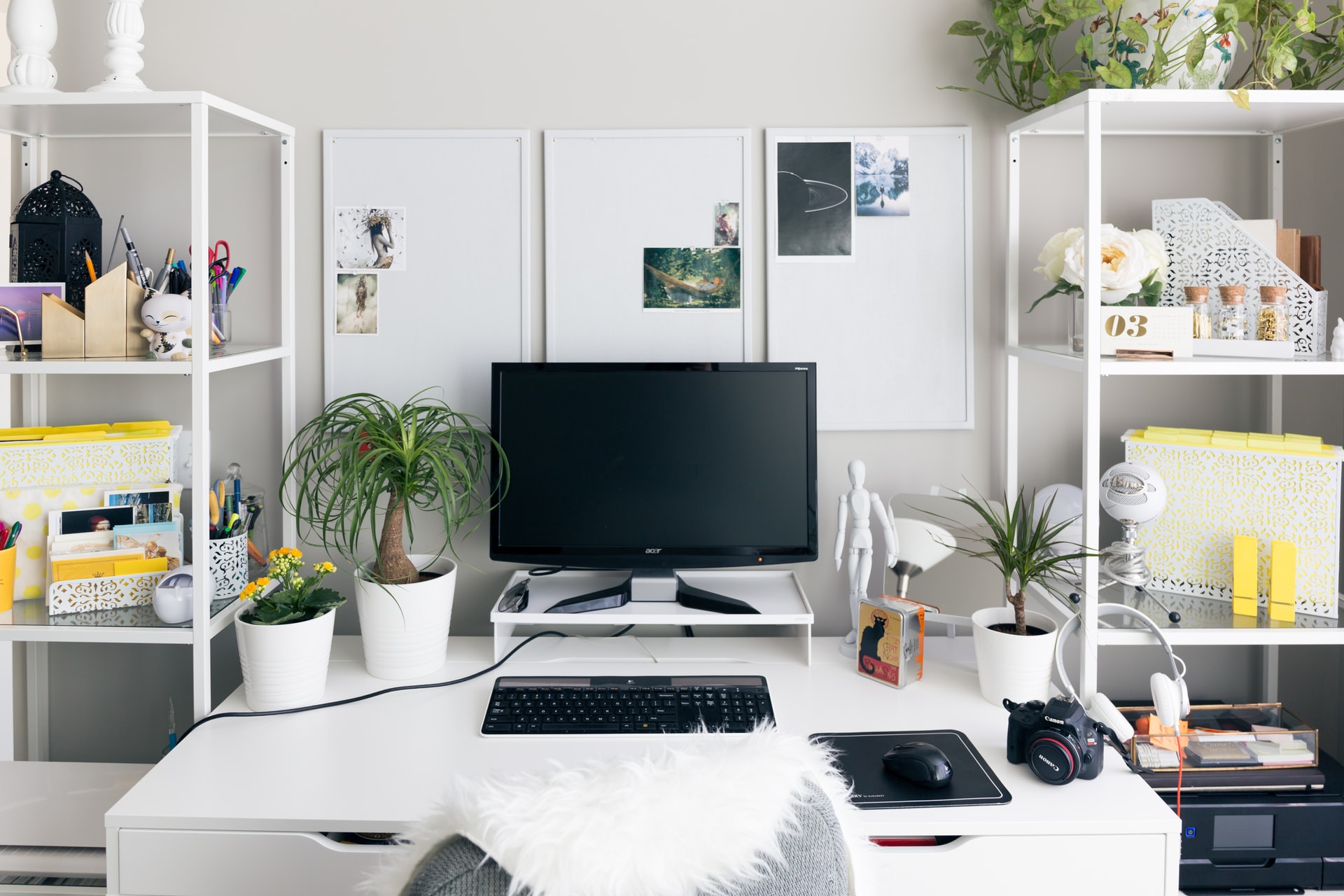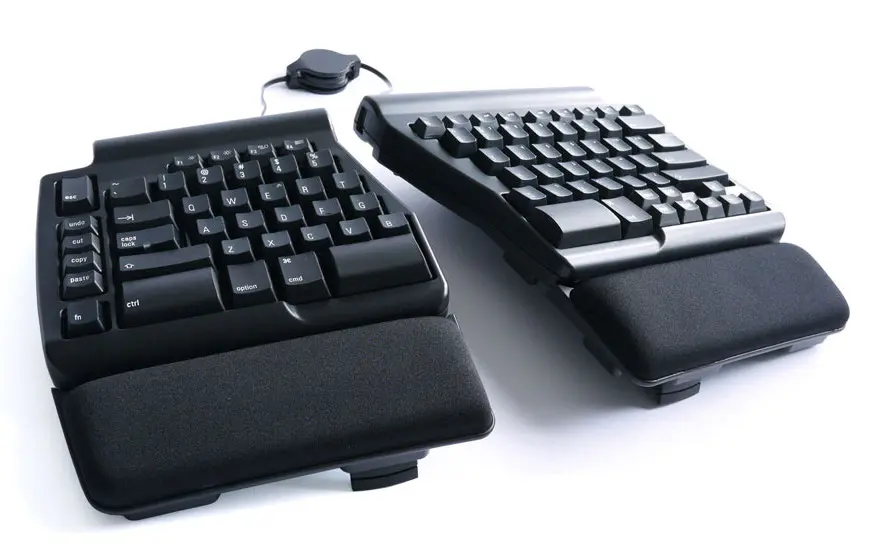Best 3D Printer Reviews For Your Home
We looked at tons of products to find the best 3D printer. The introduction of 3D printing in the 1980s has reshaped the landscape of technology, merging software and material science. It has changed the way we produce entire physical objects and parts in the last few decades, leading a manufacturing renaissance. Once a method for niche products, 3D printers are now a key technology tool used both commercially and in the homes of consumers like you.
The implications are limitless for industries such as healthcare, education, textile, aerospace, personalized products, and more. The creative process is completely digital and no longer limited by classical production methods. The possibilities are as vast as the user’s imagination.
We reviewed dozens of the top 3D printers to bring you our favorites:
As an affiliate partner, I may earn qualifying purchases made on products.
1 Anycubic Photon S
Top ProductThe Anycubic Photon S is the follow-up to Anycubic’s popular Photon SLA 3D printer. This fully-enclosed printer is a beginner-friendly LCD resin printer that features a large and responsive touchscreen. This affordable printer is ideal for printing figurines, jewelry, and other small models. The Photon S is equipped with dual carbon filters, greatly reducing noxious fumes. The dual Z-axis rail makes the bed very stable, which helps with movement and stability of the bed during printing. This high detail resin printer yields excellent print quality.
2 Dremel DigiLab 3D45
Premium ChoiceThe Dremel Digilab 3D45 printer is an excellent product for developers and engineers, and is best for use in higher education. It’s high-powered extruder heats up to 280 degrees Celsius (536 degrees Fahrenheit) for use with many different advanced print materials, such as Nylon, polycarbonate, and EcoABS. This machine also comes with filament run-out detection and resumes printing where filament runs out. The automatic leveling sensor adds precision and detects any variation in the print bed. The fully-enclosed 3D45 also features a built-in HD camera for remote print monitoring.
3 Comgrow Creality Ender 3 3D Printer
Best ValueCreality Ender 3 series is a highly affordable, fully open-sourced, and easy-to-assemble printer with a compact design and decent print volume. This kit-style 3D printer comes with all tools needed for assembly and is a great project for middle and high school-aged students, needing about 2 hours to build. With a sizable printer area, the product value is unbeatable. The hot bed reaches 110 degrees Celsius (230 degrees Fahrenheit) in about 5 minutes, and meets the needs of fast heating and printing for ABS. This printer produces high quality products, with the option to perform upgrades easily and inexpensively.
The Original Prusa i3 MK3S has been awarded “Best 3D Printer” by numerous institutions such as ALL3DP and MAKE: Magazine. This printer is the successor of the MK2 3D printer with modifications to the extruder, sensors, and heatbed. This printer can fully recover from loss of power, and saves your print position. With improved frame rigidity, the new EINSY RAMBo motherboard detects skipped steps and layer shifting, while allowing for silent printing. The upgraded Bondtech drive gear grips filament from both sides, making the printer more reliable, especially when using flexible filaments. This printer is easy to use, affordable, and produces amazing print quality.
The Form 3 from Formlabs is a high-end SLA printer that uses advanced Low Force Stereolithography (LFS) technology introduced by Formlabs itself, increasing detail, scalability, speed, and repeatability of prints. While this machine is expensive, it produces excellent quality prints with less hassle. If your budget allows, the Form 3 is safe for beginners and advanced tinkerers alike. Innovative cartridge functions and sensors make switching between materials a breeze. This machine monitors the printing process, alerting the user of printer progress, dust in the machine, and cartridge levels. The Form 3 is easy to set-up and prints with the click of a button, monitoring your project for you, making this printer the premium choice for a professional resin printer.
The Ultimaker 2+, an FDM printer, is one of the best consumer 3D printers available today. The heatable bed is made of glass, allowing minimal bed adhesion issues when removing your projects. The innovative feeder allows you to easily swap any preferable material and choose the correct pressure for your filament. This model is incredibly reliable and relatively quiet. The Ultimaker works with Windows, OS X, and Liux, and supports open-source hardware and software. The Ultimaker series are great for design professionals and serious enthusiasts.
The Phenom by Peopoly is a Masked Stereolithography Apparatus (MSLA) resin 3D printer perfect for small businesses that mass produce products. MSLA (LCD+LED) approach is faster than other resin technology when printing a large object. The Phenom supports a wide variety of resins and features a lower overall cost compared with other SLA printers. While the resolution may not be as high as other printers, and is noisy when printing, there are few quality options like the Phenom that come with a large build area that allows you to print detailed projects in one piece.
The Qidi Tech X-Plus printer is best for semi-professional users. The newly developed extruder allows for different printing capabilities and minimizes wear. Extruder A is used for printing general materials such as PLA, ABS, PETG, and TPU. Extruder B is used for printing advanced material such as Nylon, Carbo Fiber, and PC. This printer also comes with two different spool holder capabilities, which allows filaments to be placed on the inside or outside of the printing chamber. This machine can also handle third-party filaments. The X-Plus’s double Z-axis driver ensures more stable and precise printing quality when you print large models.
BIBO’s 3D printer is one of the best dual extruder machines, which allows you to use two different colors and materials for the same print. Dual extruders can also print two of the same objects at a time, cutting printing time in half. The machine’s removable enclosed cover allows for better temperature control inside the printer, which is great for printing with ABS filaments. The acrylic cover is also better for cooling when using PLA filament. This 3D printer is available with a laser module, that can either come bundled with the printer, or included as a separate add-on. This module allows laser engraving of objects such as wood, plastic, leather, paper, and even plastic. The glass bed is removable, which permits smooth-bottomed prints. The BIBO 3D printer comes with print recovery and a filament sensor, making this well-rounded FDM printer a great choice.
The Monoprice Voxel 3D printer is great for users getting started with 3D printing. The Voxel has a quick change nozzle that allows you to change the nozzle quickly, without needing tools. This printer ships fully calibrated and ready to print right out of the box. The machine’s auto feeding makes loading filament pain-free. Additionally, a built-in sensor recognizes low filament levels and pauses prints in progress until materials are reloaded. The Voxel is speedy and reliable. It features 8GB of internal memory, a USB port, a Wi-Fi radio with a hotspot, and a built-in camera for monitoring print operations.
Buyer’s Guide to the Best 3D Printer
What is a 3D Printer?
3D printing, or additive manufacturing, is a prototyping process where a real object is created from a three-dimensional design. Additive Manufacturing (AM) is the process of building an object by adding material layer-by-layer. AM is a technology that allows physical components to be made from virtual 3D computer models using modeling data. The object is digitally sliced into layers, and these layers are fused together one-by-one. Unlike subtractive manufacturing, where material is carved from a larger block, most AM processes use less material, minimizing waste and labor. The actual 3D printing process is only one part of the entire procedure. Additive manufacturing is colloquially referred to as 3D printing. These terms have lent themselves to be interchangeable.
A typical 3D printer is like an inkjet printer operated from a computer, but instead of using ink, the printer utilizes filaments. These materials can range from thermoplastics to metals, glass, paper, and even wood substances.
With 3D printing, a user creates a virtual design of the object that they want to print in 3D. User saves their file as a Computer Aided Design (CAD) model, which is used to transfer this data to the printer to fabricate the object. The CAD model is then converted to the STL (stereolithography) file, which is the standard digital file format that is needed to transform a 3D model into a physical object. This file is transferred to the machine and built.
How Do I Get Into 3D Printing?
Getting into 3D printing can seem quite daunting. Choosing a 3D printer depends firstly on what you plan to make. There are typically two classes of 3D printers- hobby and professional machines.
It is important to consider the following:
- Price: What is your preferred price range?
- Quality: What will the finished product look like?
- Speed: How long does it take to finish a project?
- Capability: What special features are needed for end design?
- Resolution: Do you need a superior surface appearance at smaller heights?
- Experience level: How much training is needed to operate the machine?
Most consumers will end up choosing between two major options: FDM (fused deposition modeling) and SLA (stereolithography). FDM and SLA are the most widely used technologies for 3D printing, and are most often used to fabricate plastic objects or composites, and nylon-like materials.
Types of 3D Printers
FDM
There are several different types of 3D printing to choose from, but the most widely used and commonly sought after with people just getting into 3D printing is a process known as Fused Deposition Modeling (FDM). FDM is the most common form of material extrusion 3D printing. FDM printers use a thermoplastic filament (polymer that changes to a liquid upon the application of heat and solidifies to a solid when cooled). These filaments are unwound from a coil and fed through an extrusion nozzle, layer-by-layer, to create a 3D object. This method is relatively easy to use and great for hobbyists, inventors, and small business owners. FDM printers have the lowest price of entry and materials, but also the lowest resolution and accuracy. They are best for basic proof-of-concept models and simple prototyping.
SLA
Another type of 3D printer is called Stereolithography (SLA). SLA is the most common form of light polymerization 3D printing. This type of high-end printer utilizes laser technology to cure layer-upon-layer of photopolymer resin (polymer that changes properties when exposed to light) into hardened plastic. A laser beam, directed into the pool of resin, traces the cross-section pattern of the model for that particular layer and cures it. SLA printers utilize highly versatile material selections and have the highest resolution accuracy, the sharpest details, and the smoothest surface finishes of all 3D printing technologies. However, SLA build areas are typically smaller and finished prints need to be processed and then cured. They are best for functional prototyping, patterns, molds, and tooling, making them one of the most versatile 3D printers.
DLP
The oldest of 3D printing technologies, Digital light processing (DLP) machines are similar to SLA technology in that they both use photopolymers. The difference between the two is that DLP uses a digital light projector to flash a single image of each layer at once, achieving faster print times. While SLA uses ultraviolet light, DLP uses arc lamps.
SLS
Another type of 3D printer similar to SLA, Selective Laser Sintering (SLS), utilizes a high-powered laser to fuse small particles of plastic, metal, ceramic, or glass, as opposed to light beams and liquid. Unlike SLA technology, the technology support material is not needed as the build is supported by unsintered material. SLS uses powdered substances and is a process that repeats one layer at a time until it reaches the object’s height. SLS printers have a low cost per part, a high productivity, and are best for functional prototyping and custom manufacturing.
SLM
Like SLA, Selective Laser Melting (SLM) printers use a high-powered laser beam to form 3D parts. During the printing process, the laser beam melts and fuses various metallic powders together. While SLS processes partly melt the powder, SLM completely melts it. SLM is widespread among aerospace and medical orthopedic industries, and not commonly used as a desktop printer for most everyday users.
What Makes The Best 3D Printer
After reviewing the various types of printers, here are a few questions that should be taken into consideration before deciding on which type of 3D printer to purchase.
Time Setting Expectations
The cheaper and smaller the 3D printer, the more assembly, calibration, and time typically required to get going on project creation. If you are on a tight budget and have time to devote to tinkering with the machine and troubleshooting, a hobby-grade machine might be right for you. Be prepared to modify your equipment and experiment with different software settings.
Build Envelope
Typically, the larger the build envelope, the better. Smaller printer beds (the platform on which products are built) also pose a time and budget constraint. Larger bed sizes lead to more efficiency and allow users to print larger pieces at once, instead of building together smaller parts over a longer period.
Resolution
When reviewing specs of various printers, it is important to note the quality of finished products at different sizes and speeds. A machine may be able to pump out miniatures at a relatively high speed, but when building parts, the quality can go down immensely, and take even longer to build.
Heat Requirements
Heatbeds improve print quality and reduce warping. When choosing to purchase the addition of a heated bed, material type also comes into play. Each filament type has its own temperature requirements, and PLA and ABS materials specifically require higher temperatures. A powerful heated build plate is important when printing large parts. A heated bed also provides added adhesion, allowing materials to cool more slowly and release from the bed with more ease.
Material
Understanding material types for the final product is necessary to help users choose which type of printer to purchase.
ABS
To print with ABS, you need a temperature-controlled bed. ABS (acrylonitrile butadiene styrene) filament is strong, heat resistant, and can be smoothed with acetone. ABS is a common thermoplastic made from petroleum, which produces noxious fumes during the printing process that are hazardous to breathe. It is a popular plastic for injection molding and is used to make Legos, instruments, sports equipment, and more.
PLA
Polylactic Acid, commonly known as PLA, is one of the most popular materials used in desktop 3D printing. Known as a bioplastic, PLA provides accurate prints and is relatively easy to print with. It is the default filament of choice for most extrusion-based 3D printers because it can be printed at a low temperature and does not require a heated bed. PLA can also be food safe but is sensitive to heat after printing. PLA is quick, simple, and easy to print, and can be printed using any printer.
TPU
Thermoplastic polyurethane, or TPU, is a common form of elastic polymer that is flexible. TPU can be used with any properly equipped FDM printer, and is great for making custom phone cases, sporting goods, or automotive bushings.
PETG
Polyethylene terephthalate glycol-modified, or PETG, is the useful filament to combine strength and ductility, which is why it is used in so many mechanical parts and robotics. PETG is strong, accurate, and heat resistant, and great for artistic projects due to its transparent nature.
While these are the most common filament types, creative variations such as woodfill, metalfil, copperfill, fluorescent, color-changing, silk-like, glitter, and more are available to help a user’s imagination come to life.
Nylon
Nylon, or polyamide, is a popular yet challenging filament to work with. It is tough and partially flexible, and is able to resist high impacts. Nylon filaments typically require hot temperatures near 250 degrees Celsius. They are also hygroscopic, meaning they absorb moisture from the air, so proper storage becomes very important. Improperly dried filaments can cause printing defects. Once you’ve mastered the basics, Nylon is a great material for the use of creating cable ties, screws, nuts, and bolts, and plastic gears.
PC
Polycarbonate (PC) is a durable material used for engineering applications. Like Nylon, PC is hygroscopic, which affects printing performance and strength. It is naturally transparent and bendable without breaking. PC is best printed on a machine that has an enclosed build volume and one that is capable of handling high bed and extruder temperatures. PC is a great material for making high-strength parts, heat-resistant prints, and electronic cases.
Environmental factors
Sustainability is an ever increasing topic at the forefront of minds today. Eco-friendly 3D filament is a new alternative to classic plastic filament. Though the cost may be steep, many biodegradable or compostable filament options are available on the market. Options such as plant-based and organic waste filaments are also environmentally-friendly options. While some PLA filaments are biodegradable, objects can be created using leftover 3D printer filament. There are also biodegradable PETG blends available that can be used to create mechanical parts, 3D printer components, and other high strength products.
Spool size
Filament comes in two diameters– 1.85mm and 2.85mm. The latter filament is sometimes mistakenly referred to as 3 mm, but should not be confused with the less common filament size that actually measures 3 mm in diameter. Most models use the smaller of the two diameters. Filament is sold in spools and costs anywhere from $20 to $50 per kilogram for ABS and PLA varieties.
Environment and Placement
After purchasing a 3D printer, users must be wary of placement location, as the printing process emits microparticles that are hazardous to health and toxic to breathe. It is important to investigate filtration systems, as harmful particles lead to prolonged health issues over time.
3D printers are also temperature sensitive, so a climate-controlled room is best.
Placement can be restricted by method of transmission of software files. 3D printers can either use USB, WiFi, or SD cards, so knowledge of the transfer type of information from software to hardware is essential.
And finally, noise levels differ across printer types. Enclosed 3D printers generally produce less noise.
Afraid to take the plunge and buy a 3D printer?
Anyone interested in exploring the world of 3D printing can now do so in the comfort of their home. You don’t even have to own a 3D printer to be able to print in 3D. The technology is now available to design your own 3D models online using free programs like SketchUp or Tinkercad. After you’ve finished designing your model, you can find a local or online service that can print the 3D model for you, making creation accessible to just about anyone with access to a computer. You could even design and print one of your favorite laptop stands.

The Best Large Whiteboards
Hi, I'm Pam! A corporate girl turned entrepreneur who has been working from home for over 20 years and loving it. From a corporate IT Director to an online business owner, I found success while working remotely (sometimes in my PJs). I've been able to find balance in life and career and love to share what I've learned with others. With my master's degree in software engineering and a career in technology, my drive is to help others learn how to bypass the hurdles and technology challenges to gain the confidence to build the dream business they've always wanted to reach financial freedom. My work has been quoted on Forbes, Bloomberg, European Business Review, Hive, and Business Partner Magazine to name a few. Click my little head above to read all of my posts!


















